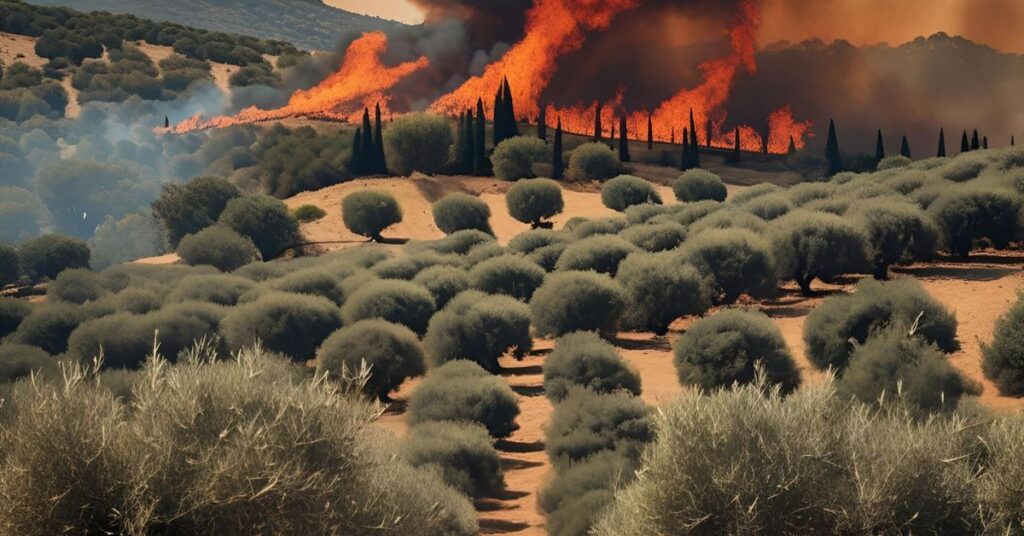
Wildfire Impact on Olive Groves in the Mediterranean

For centuries, olive groves have shaped the Mediterranean landscape. Their silvery-green canopies stretch across hillsides, valleys, and coastal plains, forming both a cultural symbol and an ecological backbone of the region. But in recent decades, the wildfire impact on olive groves—driven by climate change, land abandonment, and prolonged droughts—has become one of the most pressing threats to these iconic ecosystems.
Wildfires and the Mediterranean Climate
The Mediterranean is naturally fire-prone. Hot, dry summers and strong seasonal winds create perfect conditions for flames to spread. However, the frequency and intensity of wildfires have surged in recent years. These “megafires” not only devastate forests and pastures but also cut through agricultural landscapes—placing olive groves directly in harm’s way.
Olive Trees: Resilient, but Not Invincible
Olive trees are remarkably resilient. Their deep root systems and regenerative ability often allow them to resprout after fire damage. Some ancient groves even bear scars from past fires yet continue to produce fruit.
But recurring blazes are testing their limits. The wildfire impact on olive groves includes:
-
Killing younger trees before they establish strong root systems.
-
Damaging soil structure, reducing fertility and water retention.
-
Weakening older trees, leaving them more vulnerable to pests and diseases.
-
Disrupting pollination and fruiting cycles for years.
When fires return every few summers, groves lose their ability to recover fully, reshaping the ecological balance of the Mediterranean landscape.
Soil and Biodiversity Under Threat
The ecosystem around olive groves is more than just trees. Ground vegetation, insects, birds, and microorganisms form a web of life that sustains both biodiversity and farming. After fires:
-
Soil erosion accelerates, stripping nutrients needed for olive cultivation.
-
Native plants are lost, sometimes replaced by invasive species.
-
Pollinators and beneficial insects decline, disrupting natural cycles.
These effects highlight the wildfire impact on olive groves as not only an agricultural issue but also an environmental one.
Economic and Cultural Consequences
The Mediterranean diet, renowned for its health benefits, relies heavily on olive oil. When groves burn, the economic toll on farmers and rural communities is devastating. Many small-scale farmers cannot afford to rehabilitate damaged land, leading to abandonment. This abandonment then creates more flammable landscapes—a vicious cycle.
Beyond economics, olive groves represent centuries of tradition, heritage, and identity. The wildfire impact on olive groves extends to cultural loss, as communities see landscapes tied to their history vanish.
Building Fire-Resilient Olive Landscapes
Protecting Mediterranean olive ecosystems requires proactive land management. Some key strategies include:
-
Preserving traditional low-density groves that act as natural firebreaks.
-
Integrating grazing animals to control undergrowth and reduce fire fuel.
-
Diversifying landscapes through agroforestry systems.
-
Using satellite monitoring and early-warning systems for fire detection.
-
Supporting small farmers with financial and technical recovery aid.
Conclusion
The wildfire impact on olive groves is reshaping the Mediterranean, threatening both ecosystems and traditions. While olive trees have long been symbols of resilience, the challenges of climate change and land-use pressures demand more than endurance.
Safeguarding olive groves means protecting landscapes, livelihoods, and a cultural legacy that has endured for millennia.